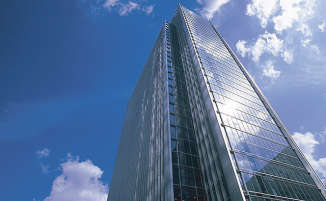Through much of 2018 the talk has been that major City firms have been extraordinarily busy. GDPR, a rebound in transactional activity as deals put on hold by Brexit are pushed through, a robust showing from the global economy…
And this has translated into… not that much. London’s Big Four Magic Circle firms have packed in closely this year, with revenues up between 4% and 6%. True, in contrast to 2016/17, when currency movements flattered subdued underlying results, this year they have performed modestly better than the headline numbers suggest. But for those whose memories stretch to the 1990s through to 2008, when ‘really busy’ meant routinely sticking 10% to 15% like-for-like on the top line, this remains a very different environment.
Without much to choose between them, of the quartet, Clifford Chance posted the best numbers in relative terms, with partner profits up sharply to £1.6m. Building on a solid showing last year, there is at least some indication now that the supposed rising morale and clearer focus under Matthew Layton is finally showing up in the numbers. But we’re grading on a curve here and CC will have to do a lot more to show it has got near shaking off the institutional inertia that has progressively settled in over the last 15 years.
Allen & Overy is more subdued after a standout performance last year but has the benefit of the best post-Lehman form of its peer group. In a period in which Linklaters and Freshfields Bruckhaus Deringer were prevalent on a string of big-ticket deals, their results look respectable rather than anything to excite. The rebound in profitability will be particularly welcome at Freshfields as it ushers in its overhauled equity structure this year, though we are in the strange position of seeing vulnerability at an institution that should be cementing its world-beating status right now. Still, a 12-month period for one of the City’s best law firms to regroup was needed and had better not be wasted.
Another firm with very relative cause for cheer is Ashurst, which at least managed to give its continually-lagging ‘share price’ a boost as average partner profits hit £743,000. Herbert Smith Freehills? With indications that its contentious practice remains on fine form, the question increasingly is whether its transactional half can keep up in a manner commensurate with its global ambitions.
So there we have it. Deal markets can boom, regulatory and contentious work bustle, but large City firms are unable to perform at anything like the level they did during 1986 to 2008. This only reinforces the sense that, while one section of their practice captures high-margin, strategic work that pushes them skywards, the remaining three quarters is increasingly tethered to the ground. Via increasingly rigorous panels, major markets not prepared to support the margins these firms target and the loss of lucrative work to US rivals, major City firms look like what critics dubbed the banking industry after the credit crunch: utilities attached to casinos.
Growth and margin is being driven by a small proportion of work – perhaps 5% to 15% of their matters – and by New Law operations cannibalising their mainstream revenues. That leaves the thorny issue for the City’s full-service juggernauts of what to do with that drifting two-thirds-plus of their business.
‘For more analysis of leading firm results see ‘Comment: A new Global 100 elite emerges as the old ones decline’














